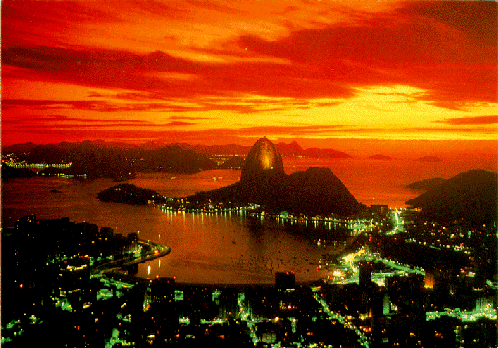In this site!
Home Page: Come back to the Home Page!
I'm here: Let me introduce myself
Other student's: That people I was talking about...
Links!: Links to a lot of things all together

With the inauguration of Brasilia in 1960, Rio de Janeiro ceased to be Brazil's capital. Nowadays, Rio is the second largest city of Brazil and major cultural capital and, to some extent, its "emotional" capital as well. Rio de Janeiro has a majestic beauty, with built-up areas nestled between a magnificent bay and dazzling beaches on one side and an abruptly rising mountain range, covered by a luxuriant tropical forest, on the other. This unique landscape makes Rio one of the most beautiful cities in the world, justifying its title of "Marvelous City" (Cidade Maravilhosa). Rio's cultural life is intense and varied. Perhaps at no time is the city's festive reputation better displayed than during the annual carnaval which enlivens the city for 3 solid days with music, singing, parties, and desfiles (street parades). With its world famous beaches free to all (such as Copacabana and Ipanema), its splendid bay, one of the loveliest in the world, and its wonderful climate, a blend of summer and springtime, Rio de Janeiro is a city that lives in and for the sun. Its population is around 5,750,000 inhabitants.